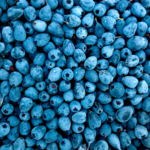Monosodium glutamate (MSG) is one of the most commonly used and debated FDA-approved food additives. Although MSG is classified as “generally regarded as safe” (GRAS) for use in food, some people choose to avoid it out of concern of negative health consequences. MSG must be labeled as an ingredient on the nutrition label, according to the FDA.
Various scientific sources have repeatedly proven that MSG is safe when ingested at normal quantities by the general public, according to Harvard University. According to the university, the average person consumes 11 grams of glutamate per day, a naturally occurring amino acid found in many proteins, and less than one gram of MSG per day.
What Is MSG?
MSG is a sodium salt generated from glutamic acid, one of the many important amino acids found in natural diets. It’s also known as glutamate, the free-form type of glutamate, which works as a neurotransmitter in the body and has been connected to brain development.
When isolated from other amino acids, glutamate can act as an enhancer, even though it is found naturally. MSG is the sodium salt of glutamate, which is made up of sodium, water, and glutamate.
Is MSG Harmful?
Animal studies have connected excessive MSG consumption to blood sugar swings, inflammation, obesity, nerve damage, and behavioral issues.
MSG usage in humans may lead to weight gain by boosting satiety and food intake. According to a 2017 review published in the International Journal of Food Properties, this increases your risk of metabolic syndrome. It’s preferable to take less MSG than to consume too much, as the latter might significantly raise your chance of becoming overweight.
Because additional human research are needed in this area, ensuring that your MSG intake is low is the best method to ensure that you maintain a balanced diet and keep risk factors for chronic disease low. Ingredients are listed on the nutrition label in order of predominance.
Another factor to consider is that MSG is frequently found in processed foods, which can be harmful to your health if you eat a lot of them. Follow your doctor’s advice on eating a well-balanced, diverse diet, and consult with him or her if you have any questions or concerns about additives.
Which Foods Contain MSG?
Monosodium glutamate is a member of the glutamate family of compounds, which includes a number of important amino acids. Many protein-rich foods, such as milk, cheese, fish, meat, and many vegetables, contain it. This chemical is notably abundant in Parmesan cheese, mushrooms, and tomatoes. MSG is also found in processed meals and fast food, particularly Chinese cuisine.
MSG enhances food’s natural flavor yet having no texture or flavor of its own. It was first developed by chemist Kikunae Ikeda and recognized as a taste enhancer by Japanese researchers in 1908. It has since become one of the most extensively used additives in food production. Ikeda coined the term “umami” to describe the flavor, which is a novel addition to the traditional tastes of sweet, salty, sour, and bitter. Here are six common foods that contain MSG, as well as their possible health risks.
Fast Food
One of the most common sources of MSG is fast food, particularly Chinese food. According to a 2017 study published in the Indian Journal of Critical Care Medicine, “Chinese restaurant syndrome” is characterized by itching, headache, hives, throat irritation or swelling, and tummy pain after eating Chinese food containing excessive doses of MSG. Researchers looked at an instance in which a patient had significant symptoms such as being unable to talk and swallowing saliva. The more severe symptoms take hours to manifest, according to researchers, thus this ailment could be life-threatening. Symptoms of Chinese restaurant syndrome were initially noticed in patients in 1968.
MSG is no longer used in some Chinese restaurants, or its use is restricted. Others, though, continue to use significant levels of MSG in foods like fried rice. Another factor to consider is that many specialty Asian restaurants are unable to alter specific recipes because soy sauce or other MSG-containing blended sauces are required for palatability.
MSG is used as a flavor enhancer in fast food businesses such as Burger King, Chick-fil-A, and Kentucky Fried Chicken. Chick-fil-A told Today in 2019 that its chicken nuggets, basic chicken sandwich, and spicy chicken sandwich all contain MSG, but that the company was looking at MSG-free solutions for customers who are sensitive to the additive.
Chips and Snacks
What is your favorite chip brand? Look read the ingredients label carefully because MSG may be present. MSG is found in a variety of chips, including Pringles and Doritos.
Many chips benefit from MSG to improve their flavorful and contrasting flavors. Aside from the sodium concentration, it’s also why your chips may taste saltier. MSG is included in many types of corn and potato chips, and it’s also listed as an ingredient in snack mixes like trail mix.
Processed Meats
MSG is commonly found in processed meats such as hot dogs, lunch meats, beef jerky, sausages, smoked meats, pepperoni, and meat snack sticks.
MSG is used in meat products such as sausage to lower sodium content without affecting the flavor.
According to a 2014 study published in Korea Science, replacing sodium with MSG in pork patties enhanced the product’s salty flavor and palatability without compromising taste.
Instant Noodles
Instant noodles are a tasty staple for college students and those scraping by till their next payday. Although this convenience food is simple and filling, it may also contain preservatives, refined carbs, and excessive salt in addition to MSG.
Intriguingly, Harvard University researchers discovered that women who ate instant noodles at least twice a week had a 68 percent higher risk of metabolic syndrome. According to a 2018 study published in Nutrition Research and Practice, these outcomes were not detected among male participants.
Seasoning Blends
Seasoning blends add a savory and salty flavor to marinated meats, vegetables, soups, stews, and tacos. It’s a cost-effective approach to add umami taste without adding too much salt.
To improve palatability, MSG seasoning is used in many meat, fish, and poultry rubs. In the long term, though, it may be more cost-effective and healthy to make your own own barbecue rub.
Condiments
MSG is widely found in condiments such as soy sauce, barbeque sauce, ketchup, mayonnaise, and salad dressing. On its own, a small amount of MSG in condiments shouldn’t be harmful.
Many condiments, on the other hand, contain a slew of hazardous ingredients including preservatives, artificial colors, and extra sugar, all of which can harm or impair health. According to Harvard Health, food coloring chemicals can exacerbate ADHD symptoms in youngsters.
Overall, condiments prepared with natural foods and fewer ingredients are preferable.
Frozen Foods
Frozen meals are a convenient and cost-effective approach to ensure that you get a supper after a long day. To compensate for the loss of fresh flavor, certain frozen meals may incorporate additional additives, such as MSG.
Breakfast meals, frozen dinners, mac and cheese, and frozen pizzas are all examples of frozen foods that contain MSG. Whole foods should make up the majority of a well-balanced diet, with processed foods being limited.
Canned Soups
MSG may be added to quick soup mixes and canned soups to enhance the savory flavors that customers want. Campbell’s is one of the soup brands that uses the contentious chemical.
Other goods containing MSG include bouillon cubes and dried soup ingredients, which are designed to make soup quickly.










